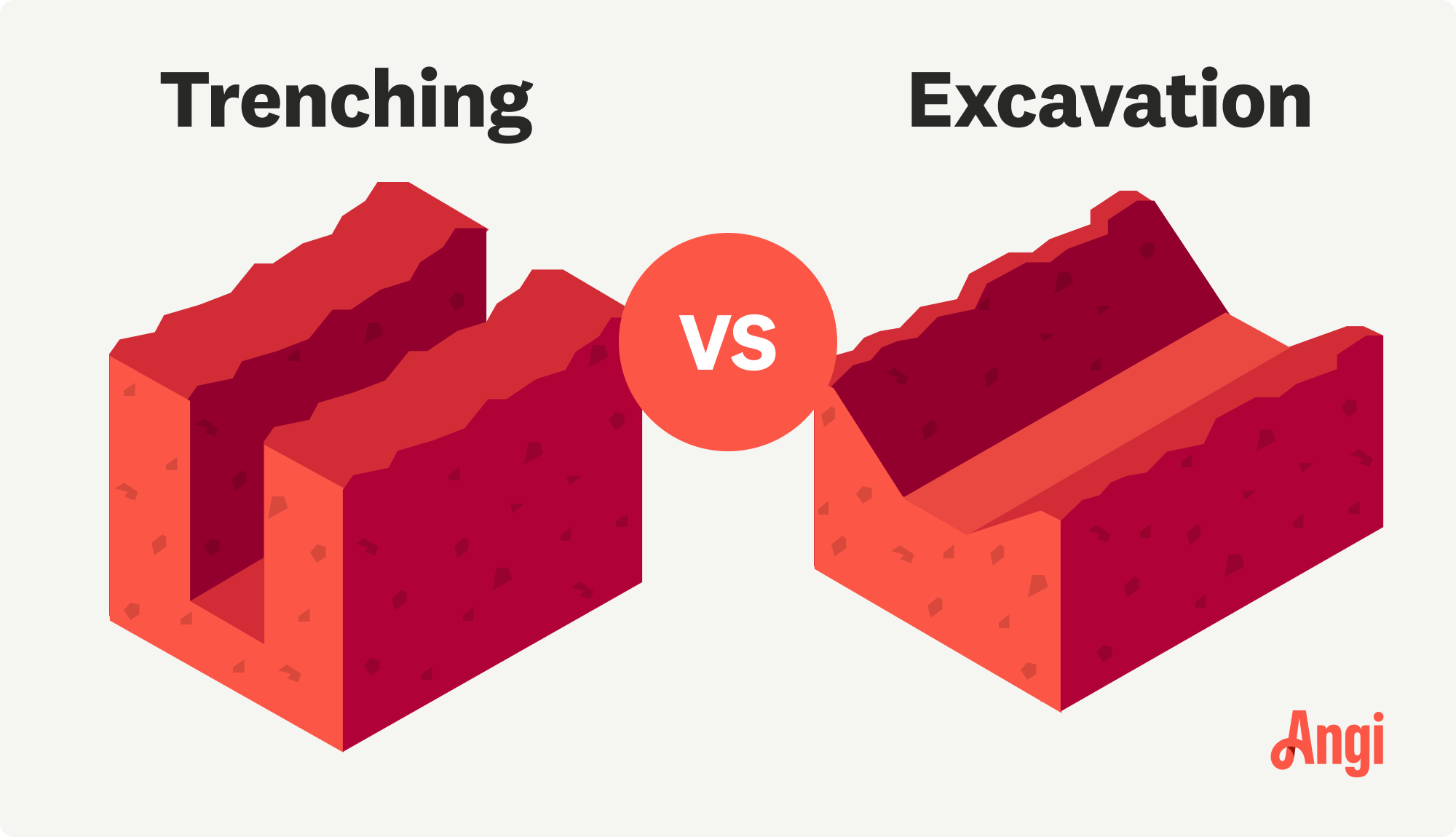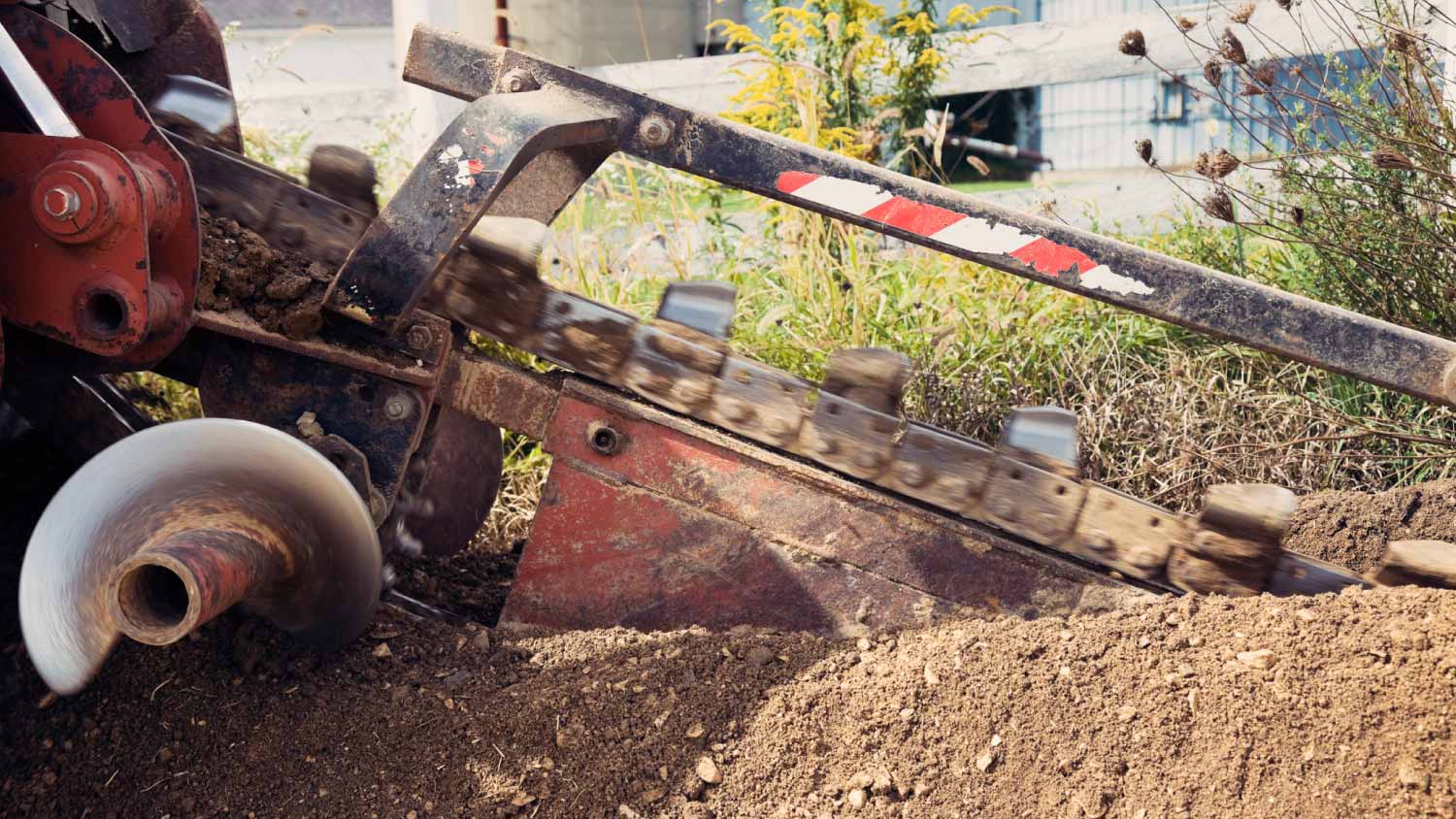
The cost to re-level your mobile home depends on your home’s location, size, and whether it needs extra support. Read more about the cost of leveling your mobile home.
Dig into the details


Excavation is any human-made cut, hole, or depression in the earth’s surface, and a trench is a type of excavation that is narrow and deep.
Excavation is used for creating foundations and drainage ditches, while trenching is often used for installing underground utilities.
Both trenching and excavating work come with a lot of risk and require the proper training.
Hiring an excavation pro ensures your safety and the safety of your property.
Excavation is any human-made cut or depression in the earth, while a trench is a narrow excavation in which the hole is deeper than it is wide. Learn the difference between an excavation versus trench to make the right choice for your project and put the proper safety mechanisms in place. Both methods can be dangerous, so it’s best to call a pro no matter what job you’re doing.

Excavation is any human-made cut or depression in the earth’s surface, and a trench is a narrow type of excavation where the cavity is deeper than it is wide. The width of a trench can’t be greater than 15 feet (measured across the bottom), and the cavity should also be longer than it is narrow. Trenching is often used for laying pipes, sewage lines, wires, cables, and other underground utilities. Excavation, on the other hand, is used to construct foundations, drainage ditches, roads, and reservoirs. Both methods require strict safety precautions.
| Type of Difference | Excavation | Trench |
|---|---|---|
| Size | Any shape or size | Deep, narrow cuts (15 ft. or less across) |
| Common uses | Foundations | Underground utilities |
| Tools | Bulldozers, shovels, excavators | Trencher |
| Training and preparation | Moderate | Advanced |
| Safety protocols | Extensive | Extensive |
| Waste removal | Dump truck or wheelbarrow | Dump truck or wheelbarrow |
To qualify as a trench, a cavity must be deeper than it is wide and longer than it is narrow. Trenches can’t be more than 15 feet across, according to the Occupational Safety and Health Administration (OSHA). With excavation, the size and shape of the cavity can be anything, from big ditches to deep holes. Excavation can involve drilling, grading, dredging, or trenching.
Trenching is common for laying underground utilities, including pipelines, electrical cables, telephone wires, and sewage lines. You might trench your yard if you’re adding electricity to your garage or running plumbing to a pole barn. Excavation is used to form a foundation for a building, such as a house, garage, or shed, and for creating reservoirs, roads, and drainage ditches.

You can create a trench with an earthmoving machine called a trencher. You can excavate with various tools, including bulldozers, shovels, and excavators. The size and strength of the equipment depend on the size of the hole and the type of soil and other material you plan to remove.
The cost of renting an excavator runs from $100 to $250 per hour. The cost of trenching ranges from $5 to $12 per linear foot or more, depending on the depth and the soil conditions. A micro-trencher rental costs around $125 per day.
Whether you’re excavating or trenching, you need to put proper safety mechanisms in place. Before digging, you must be aware of any underground utilities. Always call the 811 dig line before embarking on a digging project. Without clear markers for utilities, you are at risk for personal injury, electrocution, damage to utility lines, and gas leaks.
You should hire an excavation company near you to handle an excavation or trench project to ensure you and your property stay safe. Professionals have the tools, knowledge, and experience to ensure correct and safe trench digging and excavation. They can also handle obstructions, tough soil, and heavy machinery.
“Logistics and timing are two things that come with the price when you hire professionals to do this kind of work for you, and with that comes the security that if anything goes wrong, they will be on the line for it and not you.”
— Josh Rudin, Owner of ASAP Restoration LLC, Tempe, Arizona
Trenching and excavating can be hazardous or even deadly if the right precautions are not taken. Excavation sites should be inspected daily and throughout the project by someone qualified to assess the risks and watch for structural integrity and hazardous conditions, especially after rainstorms.
Enjoy your weekends off and leave the dangerous work to the pros who know how to safely handle everything.
You can use a dump truck to move large amounts of soil, rock, concrete, and other materials off-site. You can also move the materials onto a tarp or into a wheelbarrow to haul elsewhere for dumping.
From average costs to expert advice, get all the answers you need to get your job done.

The cost to re-level your mobile home depends on your home’s location, size, and whether it needs extra support. Read more about the cost of leveling your mobile home.

If you’re building a new home, you might need to consider the cost of digging out a basement. Use this pricing guide to get an estimate for the project.

You can't have an in-ground pool without digging into the ground. How much does pool excavation cost, and can you take it on yourself? Our guide explains.

When planning to trench, you may be concerned about rocky ground. Can a trencher go through rock? Find out what your trencher can cut through in this guide.

When prepping a trench, you may ask, “Will a trencher cut through roots?” Learn how a trencher can effectively complete your excavation project with this guide.

Discover what excavation is, the different types, and when it's needed in construction. Learn key insights for your next big home project.